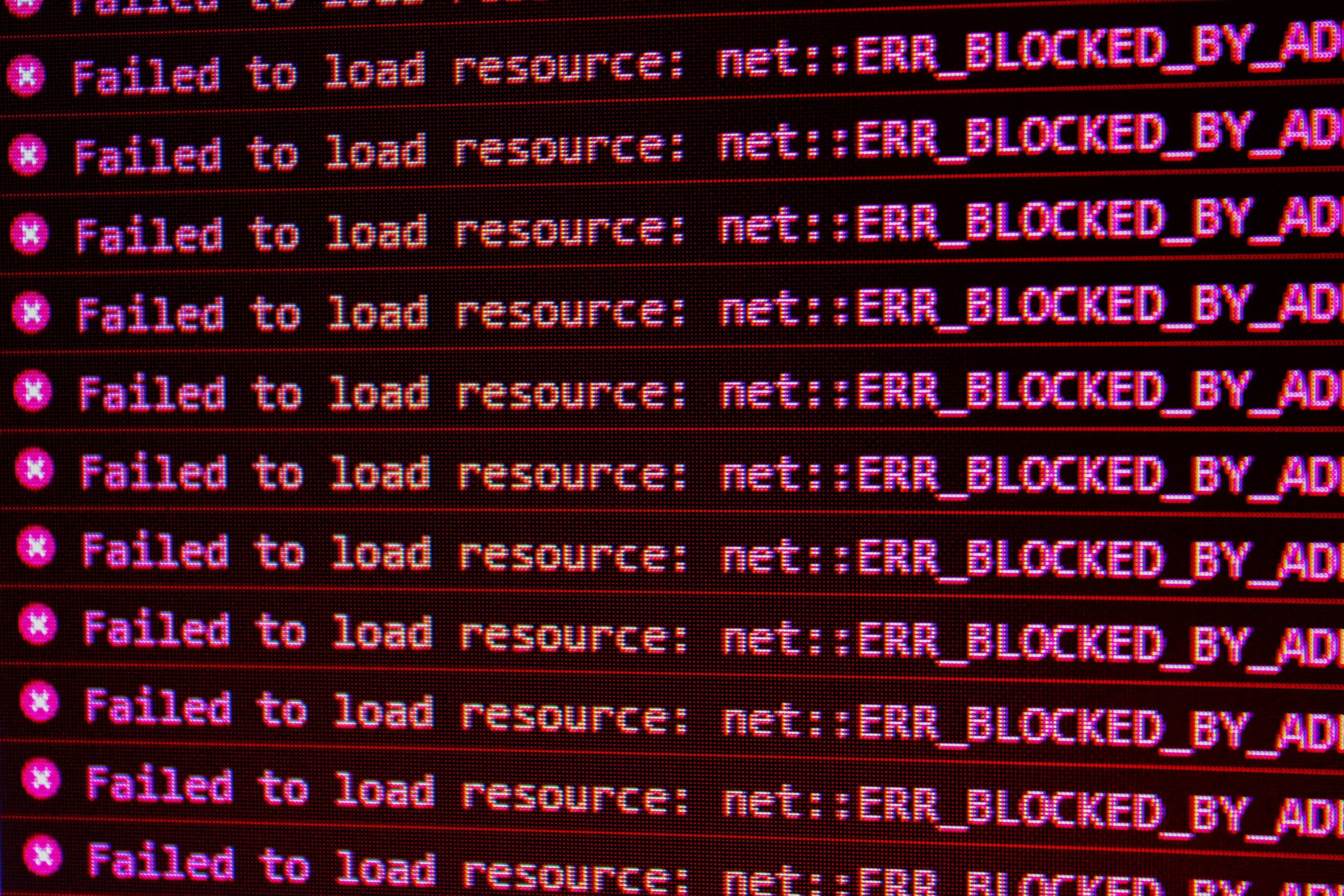In the vast digital landscape, where websites are gateways to information and services, encountering a Bad Gateway error can feel like running into a brick wall. For users of SumoSearch, this frustrating hiccup not only interrupts the search for valuable content but also raises questions about reliability and performance. Just imagine gearing up to uncover the latest insights or track down that elusive data point, only to be met with an ominous message indicating something has gone awry on the server side.
But fear not! Understanding the causes behind this pesky error can empower you to tackle it head-on. In this article, we’ll delve into the common culprits behind SumoSearch’s Bad Gateway error and equip you with practical solutions to restore your access swiftly. Whether you’re a casual user or someone relying on SumoSearch for critical research tasks, you’ll find actionable tips that can help clear that digital fog and get you back on track in no time. So let’s unravel this mystery together and ensure your search journeys remain smooth and uninterrupted!
What is a Bad Gateway Error?
A Bad Gateway Error, often signified by the HTTP status code 502, occurs when one server on the internet receives an invalid response from another server that it is trying to communicate with. This situation can be particularly frustrating for users trying to access websites like SumoSearch, as it indicates there’s a miscommunication between servers rather than an issue originating from their own device. It’s a symptom of deeper problems in the network, which could stem from server overloads, temporary issues with upstream servers, or even changes in website settings that haven’t been properly configured.
One interesting facet of the Bad Gateway Error is its potential to serve as a diagnostic tool for webmasters. For those managing websites or services like SumoSearch, unraveling this error can lead them to reevaluate their architecture and improve system resilience. It also highlights the importance of regular monitoring; understanding peak traffic times and load demands can help mitigate occurrences of such errors in future instances. Ultimately, while encountering a 502 error might feel like hitting a wall, it’s also an invitation for both users and site administrators to uncover vulnerabilities and ensure smoother digital interactions down the line.

Common Causes of SumoSearch Errors
One of the primary causes of SumoSearch errors is server overload. When user traffic spikes unexpectedly, the servers that handle queries can become overwhelmed, leading to timeouts or bad gateway responses. This scenario is often exacerbated during peak usage times when many users are accessing the service simultaneously. Understanding this aspect can help users recognize that intermittent issues might not be their fault but rather a systemic challenge faced by the service.
Another frequently overlooked cause revolves around network connectivity problems. Users may experience errors if there are disruptions between their devices and SumoSearch’s servers due to poor internet connections or ISP-related issues. For instance, packet loss or latency can hinder a user’s ability to establish a stable connection with SumoSearch, resulting in frustrating error messages. By considering these factors, users can take proactive steps—like checking their router settings or switching networks—to enhance their browsing experience and mitigate potential errors on their end.
Server Issues Impacting SumoSearch Performance
Server issues are often at the heart of performance problems with SumoSearch, particularly when users face frustrating Bad Gateway errors. Such disruptions can stem from overloaded servers that struggle to handle high volumes of simultaneous requests, especially during peak usage times. This bottleneck not only slows down search responses but can also lead to timeouts that leave users staring at an unresponsive screen, diminishing the overall experience.
Additionally, faulty configurations or software updates might unintentionally disrupt seamless communication between servers and gateways. When these elements misalign, it creates a ripple effect that impacts data retrieval speeds and page load times. Understanding the underlying cloud infrastructure—often involving distributed databases—is crucial for troubleshooting; if one part fails or is delayed in processing information, it can cascade into widespread accessibility issues across the platform. Users may benefit from real-time system status notifications or updates on maintenance schedules to remain informed and better manage their expectations during downtimes.

Network Configuration Problems Explained
Network configuration problems often lurk in the shadows, subtly impeding your access to SumoSearch. These issues frequently stem from misconfigured routers or firewalls that refuse to play nice with outbound requests, resulting in frustrating bad gateway errors. For instance, incorrect DNS settings can redirect your traffic through congested or unresponsive paths, creating delays and connection failures that exacerbate user frustrations.
Moreover, consider the role of IP conflicts within a local network. When two devices simultaneously claim the same address, connectivity can be erratic at best—occasional connections might work while others fail spectacularly. This chaos can lead to experiences where users intermittently encounter 502 errors during critical searches. Addressing these configuration mishaps requires not just technical know-how but also a proactive approach: regularly updating your firmware and meticulously documenting changes will pave the way for smoother resolutions down the line. With a bit more vigilance, navigating through network headaches can become significantly easier—and your access to valuable resources like SumoSearch shouldn’t ever feel out of reach.
Troubleshooting Steps for Users
When faced with a Bad Gateway Error while using SumoSearch, the first step is to verify your internet connection. A stable and reliable connection often goes unnoticed but can dramatically impact your browsing experience. Consider resetting your modem or router; sometimes, a simple reboot can resolve networking issues that contribute to server communication failures.
Next, clear your browser’s cache and cookies. Over time, accumulated data can interfere with site functionality by serving outdated information or causing conflicts when trying to establish new connections. Additionally, switching to a different web browser may yield surprising results—each one has its unique way of handling network requests and security settings that could affect access to SumoSearch. Finally, if you’re still encountering difficulties after these initial steps, examining any browser extensions for potential conflicts could unveil the culprit behind the pesky error message.

Contacting Customer Support for Assistance
When faced with a persistent Bad Gateway error on SumoSearch, reaching out to customer support can often feel daunting. However, this step can be a game changer in resolving your issue swiftly and effectively. Before you pick up the phone or draft an email, gather as much information as possible about your problem: note specific error messages, the devices and browsers you’re using, and any troubleshooting steps you’ve already attempted. This preparation not only streamlines the conversation but also empowers you to communicate your issue clearly.
Once connected with customer support, stay open-minded and cooperative. These professionals are trained to tackle all kinds of technical hiccups and may even shed light on underlying issues that you hadn’t considered before. Engaging in a respectful dialogue can foster a collaborative atmosphere where both parties work towards a solution together. Remember that patience is key; technical problems can sometimes be intricate and take time to resolve fully. With proactive communication, you’re not just seeking assistance—you’re building a rapport that could lead to faster fixes for future issues as well.
Conclusion: Resolving Issues Efficiently and Effectively
In the ever-evolving landscape of digital tools, resolving issues like the SumoSearch Bad Gateway error requires a strategic blend of efficiency and effectiveness. It’s essential to not only address the technical glitch at hand but also to cultivate a mindset geared towards proactive problem-solving. Embracing this approach allows users to anticipate similar issues before they arise, fostering an environment where troubleshooting becomes second nature rather than an afterthought.
Moreover, leveraging resources such as user forums, technical documentation, and customer support can transform a frustrating experience into an opportunity for growth and learning. Collaborating with others who have encountered similar challenges can unveil practical tips and alternative solutions that may not be immediately apparent through conventional support channels. Thus, cultivating a community-oriented perspective enriches one’s ability to tackle not just current obstacles but also prepares them for future scenarios—ensuring that each resolved issue paves the way for enhanced performance and resilience in navigating online platforms.
